This year’s Venice International Architecture Biennale promises what Curator Carlo Ratti in his title calls “intelligens,” which is not quite intelligence, but a way the discipline can develop active responses to the environmental and social problems we have created through our own previous intelligence –a network of social, economic, and physical frameworks, including architecture, that both enabled both the human-made world and exactly those injustices and threats to our planet. In an exhibition so dense that you at times can barely navigate through its installations, it brings together over seven hundred design (and related) minds to show how that could be done.
Usually I would assess the success of such a venture, as I have done every year for this site since 2009, but for this edition I acted as a Consulting Curator to Ratti and his team, while also collaborating on several official projects (one of which, Canal Coffee, won a Golden Lion in the official selection), so I will leave it to others to discuss how successful Ratti and his collaborators where.
One of the great things about the Venice Biennale, I believe, is that it has a mode of self-criticism built into its structure because the show extends to not only the displays the curator selects, but to national pavilions and collateral events whose number and size collectively equal, if not exceed, that of the official part. That is even more true this year, as one significant venue where the curator usually presents, namely the central pavilion in the Giardini, where most of the country pavilions are located, is closed for renovation.
Wander into that so-called garden, which is really a collection of pavilions where the countries that were powerful enough to put down their stakes when the event started in 1893 (with the addition of late-comers, including, as of next year, one by the country that seems capable of buying anything, Qatar), and you will find a lot more funk and random design than is present in Ratti’s collective science experiment as design.
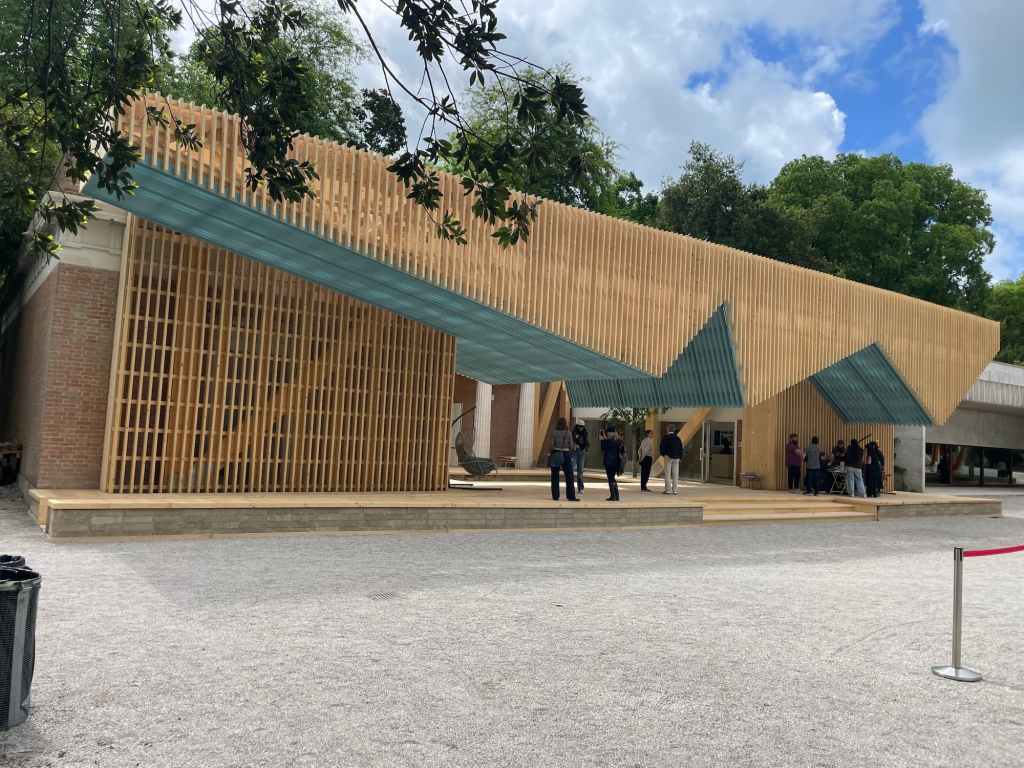
In its perch on the Giardini’s central square, the United States tries to provide an “architecture of generosity” by building a massive “porch” that completely occludes the rather neo-classical building proper. This zigzagging layer-cake of wood members looms over the plaza with few hints of the kind of delicate mediation between inside and outside, whether in terms of scale, material, or activity, that such in-between structures are supposed to provide. Inside, the spaces are crammed by the usual book-on-the-wall collection of photographs and drawings that show other American architects’ attempts to do better. Most of them, I am afraid, fail. If the curators wanted to answer the current administration’s attempt to create a gilt, neo-classical monumentalism as America’s architecture, they, I believe, have not common up with a fulsome answer.
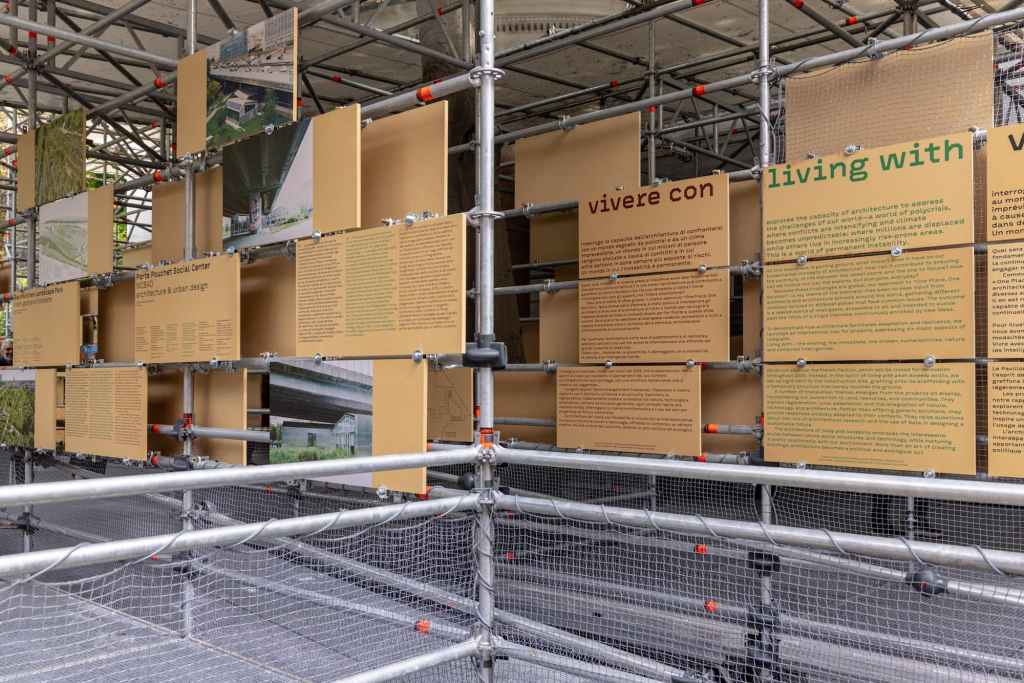
A better porch is the scaffolding architects Brendan MacFarlane and Dominique Jakob have erected around the French Pavilion. Having found their building under renovation as well, they expanded the second skin used for that construction into a meandering path that, as an extra bonus, lets people also experience the canal behind the structure. The exhibition, however, is yet another venture that would have been better served by a book that by the plywood panels that present otherwise beautiful work addressing issues Ratti laid out.
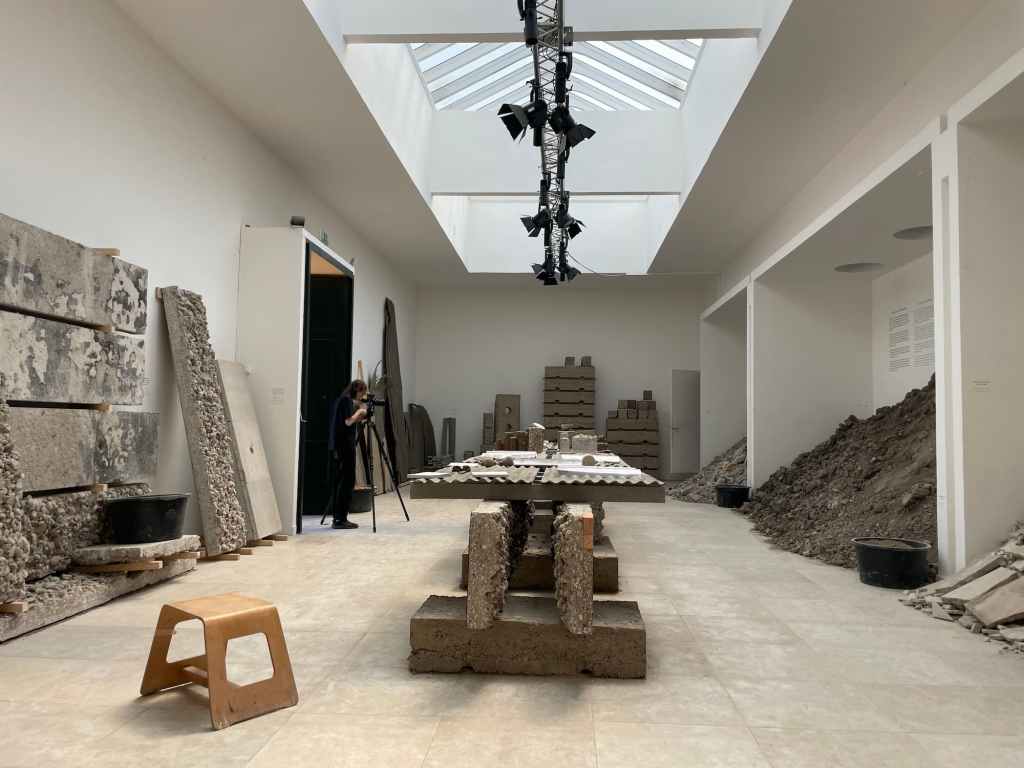
The central and French pavilions are not the only structures in the Giardini under restoration or reconstruction. Continuing a theme several countries have pursued in these cases, the Finnish and Danish Pavilions exhibit their own rebuilding. In the latter, architect Soren Pihlmann has used the excavation of one room to produce material that is piled up against the walls, shaped into new blocks, or aggregated into building materials. He shows that the most sustainable way of building is to use what you already have, reimagining the very dirt, dust, and pebbles that store the carbon of the structures as the building blocks for a better future.
Right outside the Giardini, the Papal See has turned their renovation of a local church into a display of its own research by opening the site up, covering it with a veil of netting, and using one of the spaces for twice-weekly communal meals in which the role of the structure and what it stands for can come under discussion. For the delicacy of its environment, it deservedly won a Special Mention in the Biennale’s award ceremonies.
As has often been the case in the last few years, you can find some of the best country pavilion at the Giardini in the “back forty:” a collection of structures you reach by crossing over a small bridge behind the Hungarian pavilion.
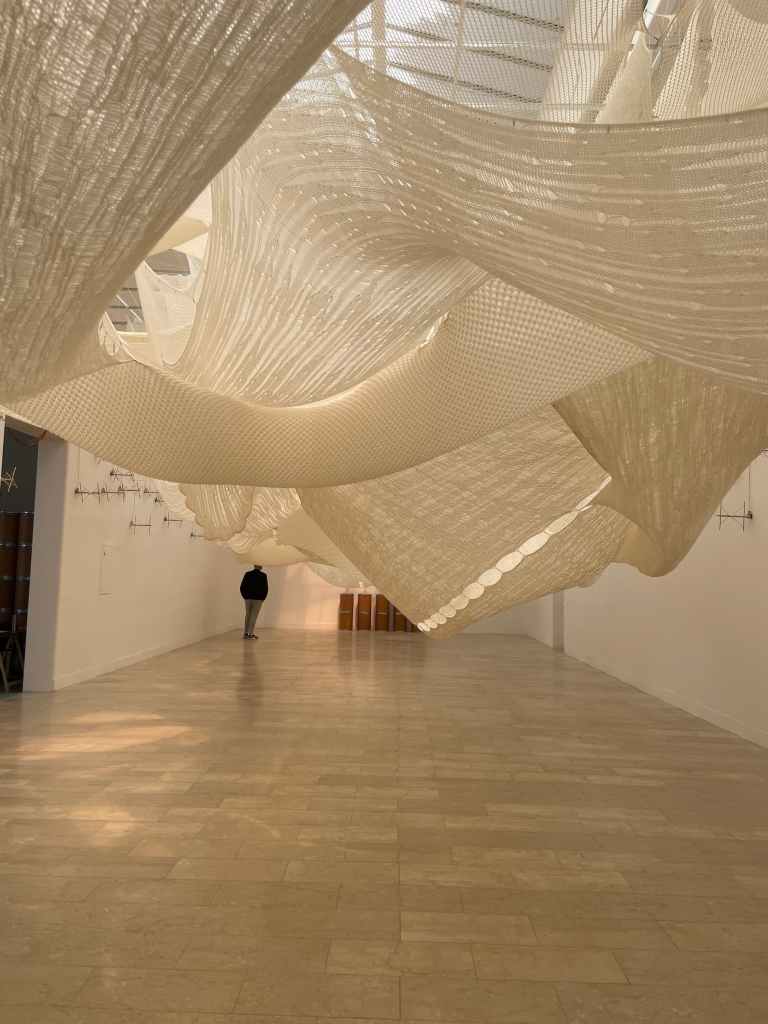
There, the Serbian Pavilion is drawing a great deal of attention with its cloud of yarn. The billows of this white weave, overlapping, dipping, rising and spreading over your head in the pavilion’s central, skylit space, dissolve all the anxiety and earnest endeavor of the Biennale. What makes the installation even more poignant is that the structure is being pulled to the walls by delicate wood spools mounted on the walls (and backed by some unseen computer and mechanical mechanism), so that the whole will return to its constituent material by the end of the Biennale’s nine-month run. It can then, in a truly sustainable move, be reused.
My favorite national display, though, was the Lares et Penates of the Polish Pavilion, exactly because of its somewhat wry refusal at the can-do optimism Ratti has proposed. In a giant exhibition filled with experiments and proposals for how we can make the world more sustainable and just, all of which are necessary and some of which are quite promising, Poland instead sticks its head in the sand. Or, rather, it “ties to the tradition of approaching architecture as shelter from disasters and wars…” by “[summoning] technical and culturally-rooted practices, providing people with a sense of agency against threats.” It does so in the simplest, most low-tech, and most visually striking manner possible: by exhibiting those signs and symbols we use to warn of and ward off threats without doing anything about them. The curators thus connect our exit signs and horseshoes hung over the door for good luck with the Roman protectors of the household for whom the exhibition is named.
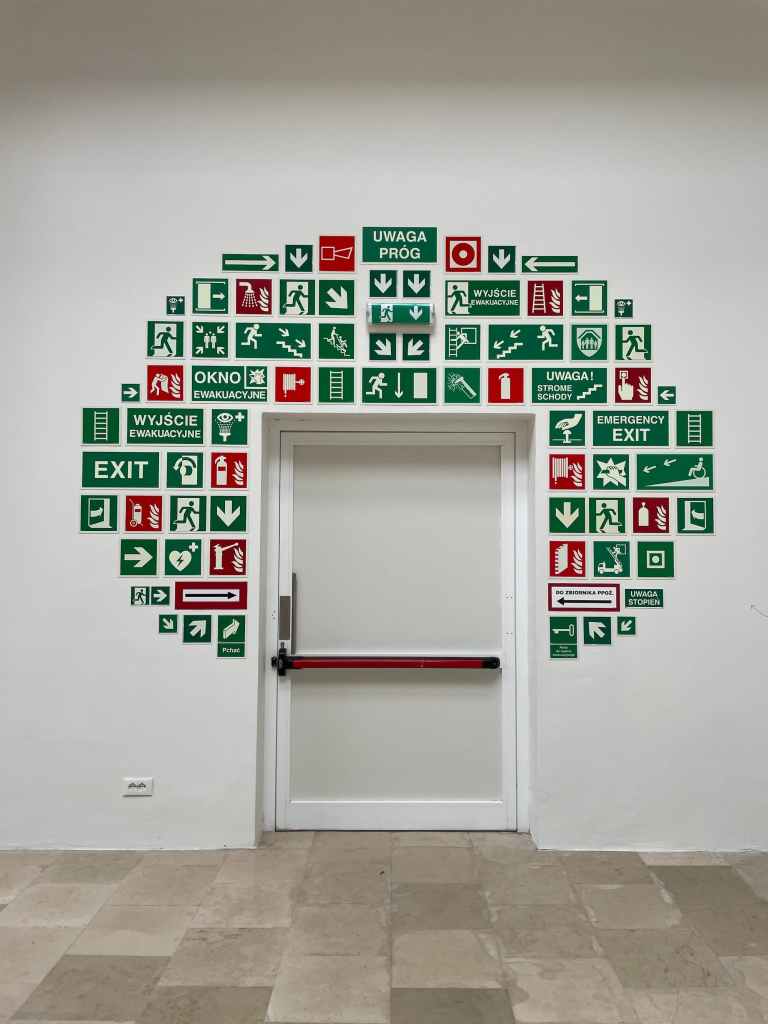
Those signs are grouped around exit doors like a halo, their standard and crude graphics blurring into an aura of hope. Fire extinguishers are enshrined on pedestals with a blue background as if they were saints ready to save us. Even circuit breakers have their day, underlined and pointed to so we take notice of their potential to restore light in times of darkness. It might not be a display of architecture’s power to do something about the the Big Problems we must confront, but it is a reminder that we should question that very certainty and wonder whether it is not the myth of preservation and salvation inherent in the cult of architecture that is as important as its technological utopianism.
Other countries and agencies similarly either tried to follow Ratti’s lead or offered counterpoints. While some, like the bombastic display of the renovation of Parisian building into the new Fondation Cartier by Jean Nouvel, do so in a traditional manner, others have chosen more delicate avenues.
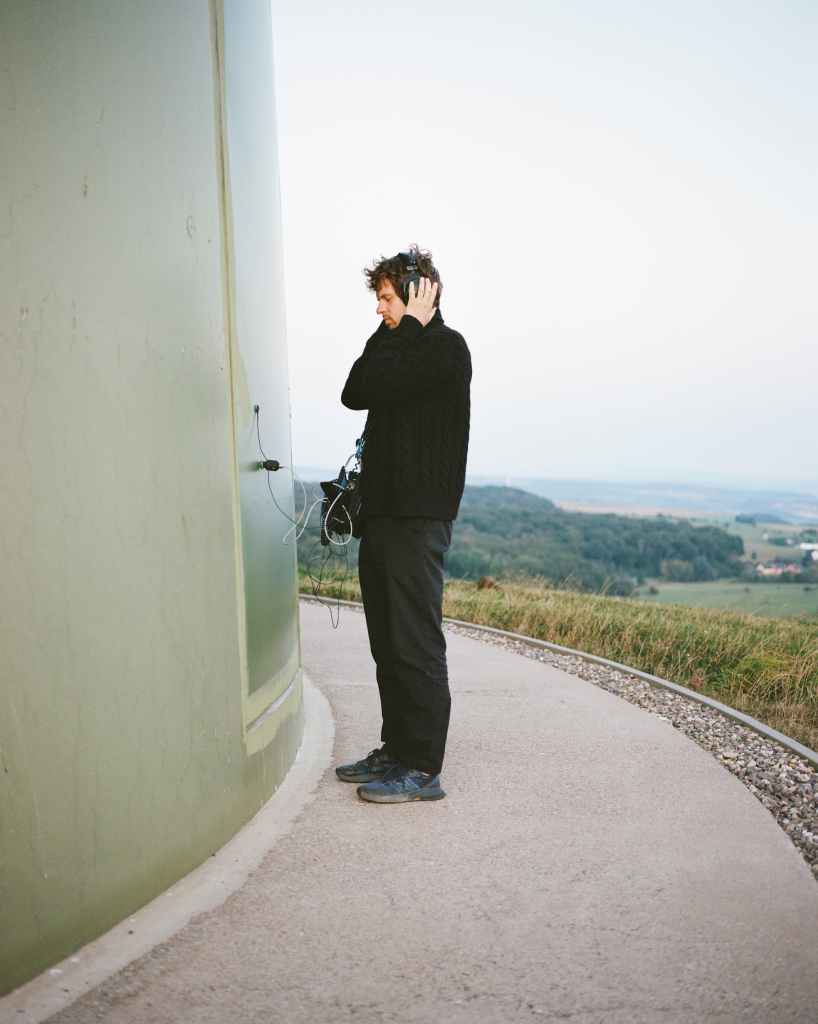
Luxembourg presents sounds of everything from a data center to rare birds to motor scooters whizzing by to represent the interweaving of human-made and natural, but also visible and nonvisible environments in its delicate sound installation.
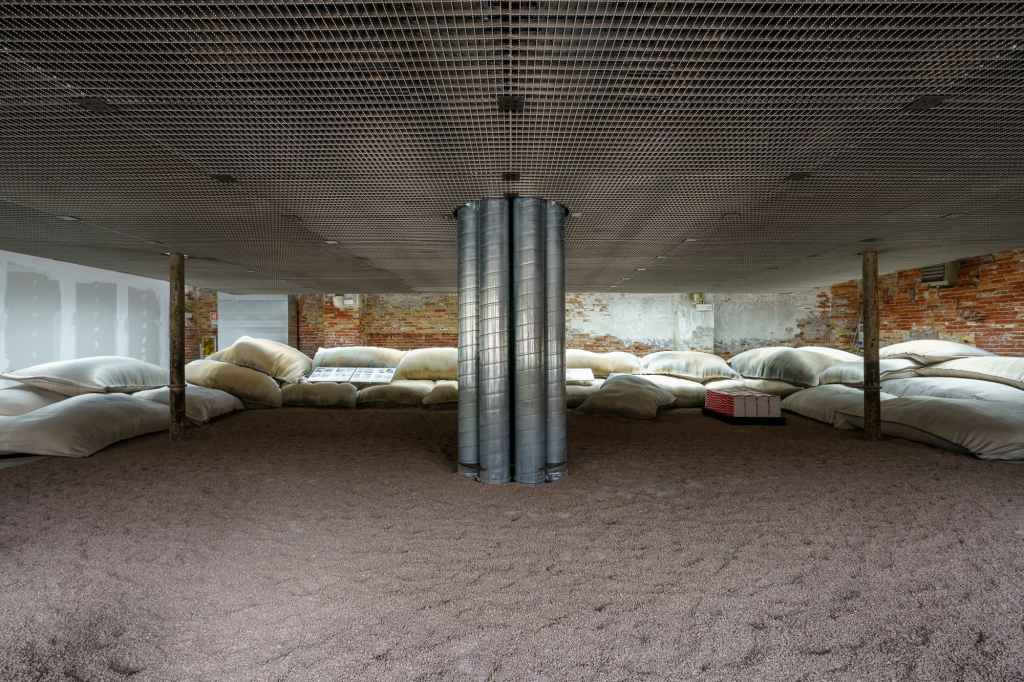
Bahrain won the Golden Lion for best country pavilion with its evocation of a cooling courtyard out of not much more than sand, sandbags, and a central column standing for a tower circulating air.
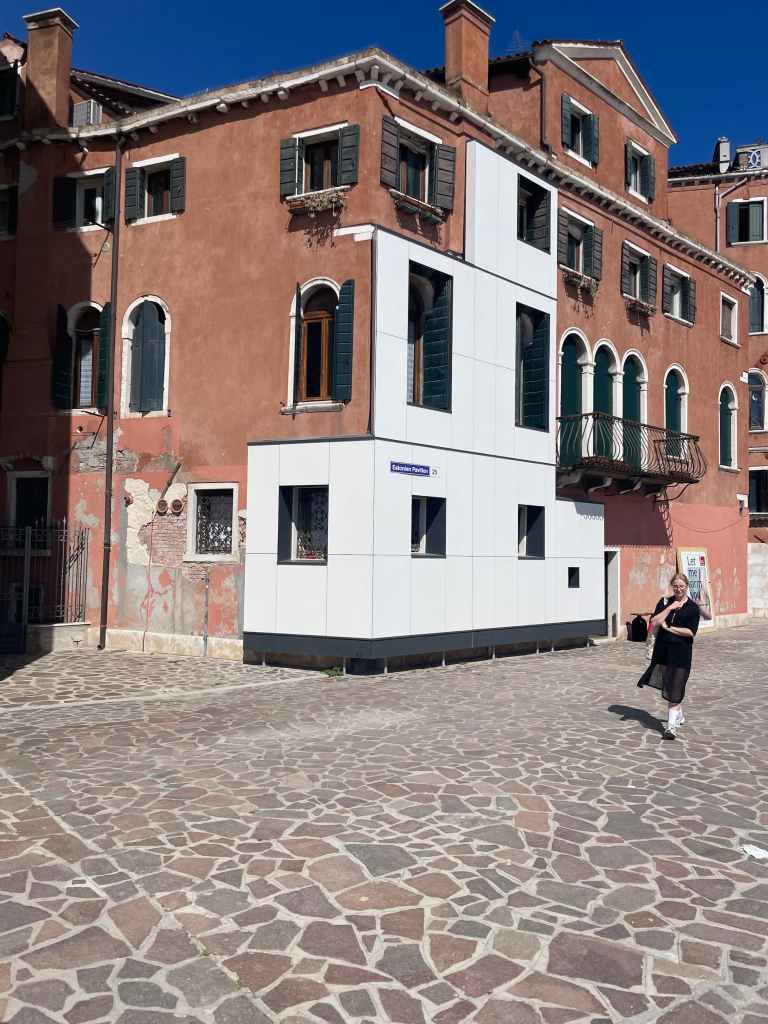
Estonia has taken over an apartment building facing the Venice lagoon and covered it partially with insulation panels to show the manner and massive scale of renovations being carried out to that country’s residential infrastructure.
What Ratti exhibits are experiments and proposals for how we can act to make the world better. What many of these other countries and agencies do is to question whether we can be so sure about these projections, and to rather show how we can dig through our existing structures, both physical and cultural, to find possibilities for other ways to act and build in this world threatened by our own industry and fascism. It is exactly the balance between these two approaches that makes this Biennale so productive and worth a visit.
The views and conclusions from this author are not necessarily those of ARCHITECT magazine.
Read more: The latest from columnist Aaron Betsky includes reviews of: On Michael Graves | On Censorship or Caution? | Uniformity in Architecture | Book on Frank Israel | Legacy of Ric Scofidio| Fredrik Jonsson and Liam Young | DSR’s New Book | the Stupinigi Palace | Living in a Diagram | Bruce Goff | Biopartners 5 |Handshake Urbanism | the MONA | Elon Musk’s Space X | AMAA | DIGSAU | Art Biennales | B+ | William Morris’s Red House | Dhaka | Marlon Blackwell’s new mixed-use development | Eric Höweler’s social media posts,| Peter Braithwaite’s architecture in Nova Scotia,| Powerhouse Arts, | the Mercer Museum, | and MoMA’s Ed Ruscha exhibition.
Keep the conversation going—sign up to our newsletter for exclusive content and updates. Sign up for free.
